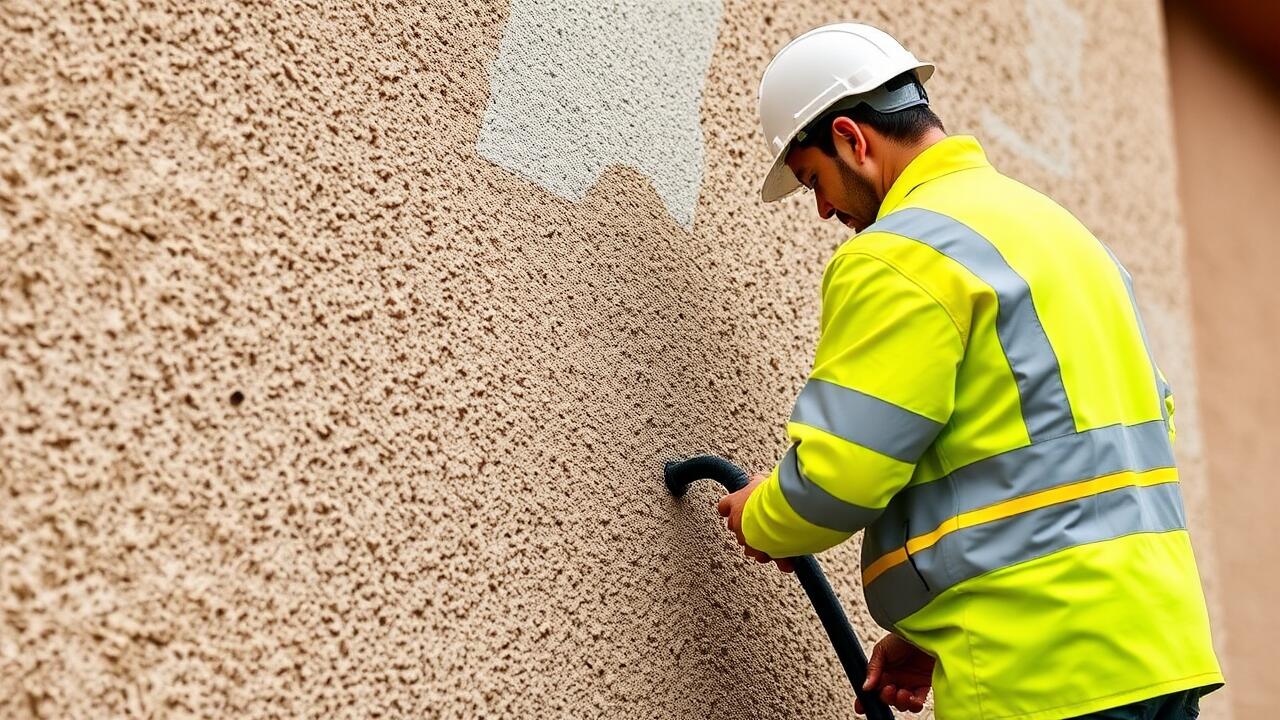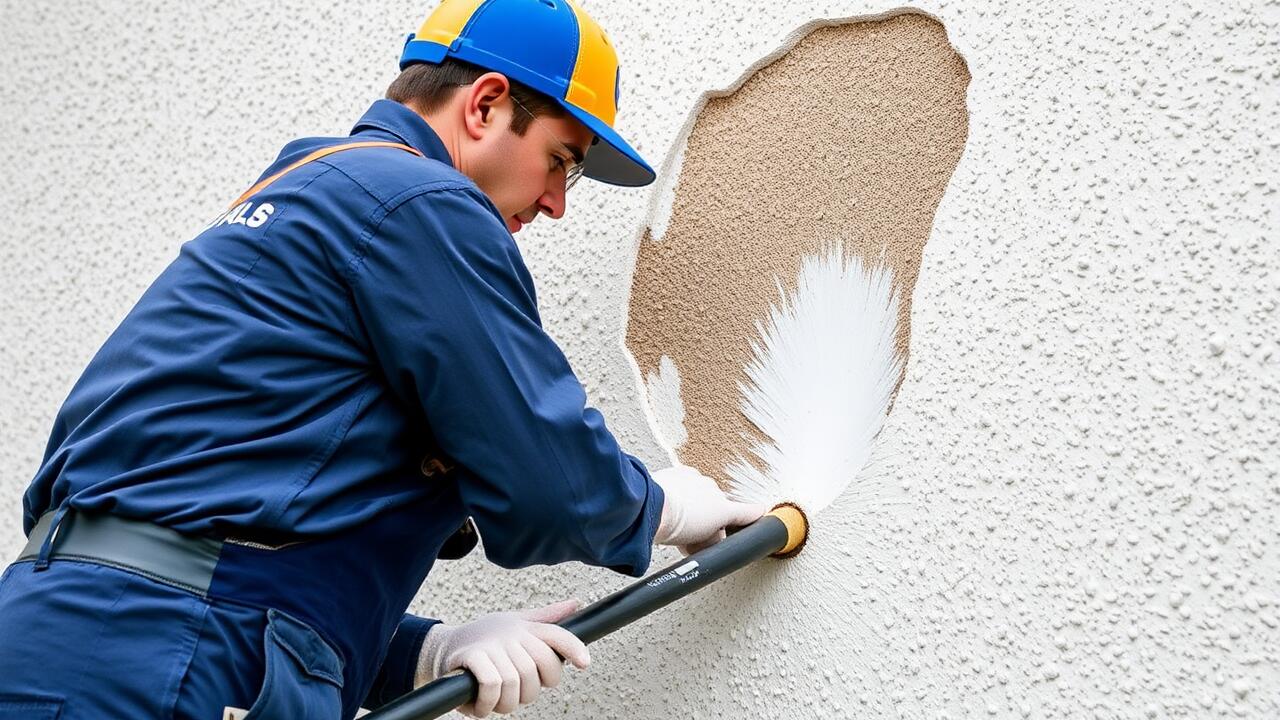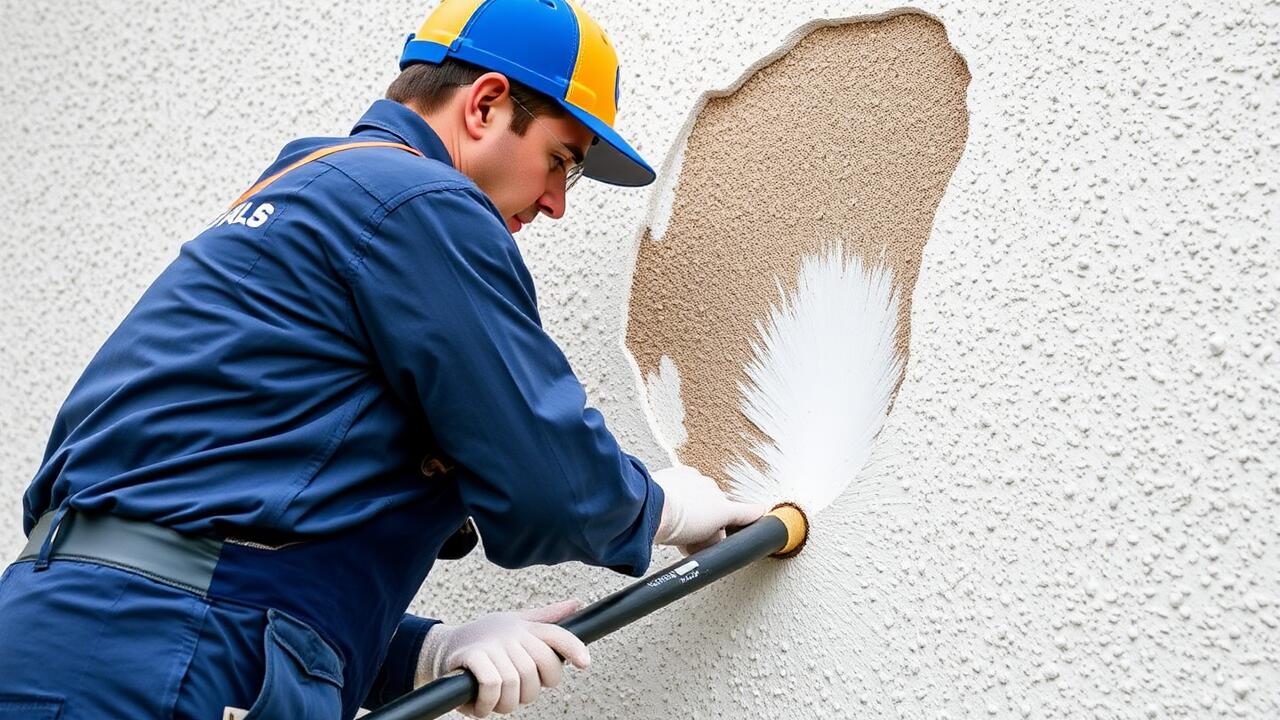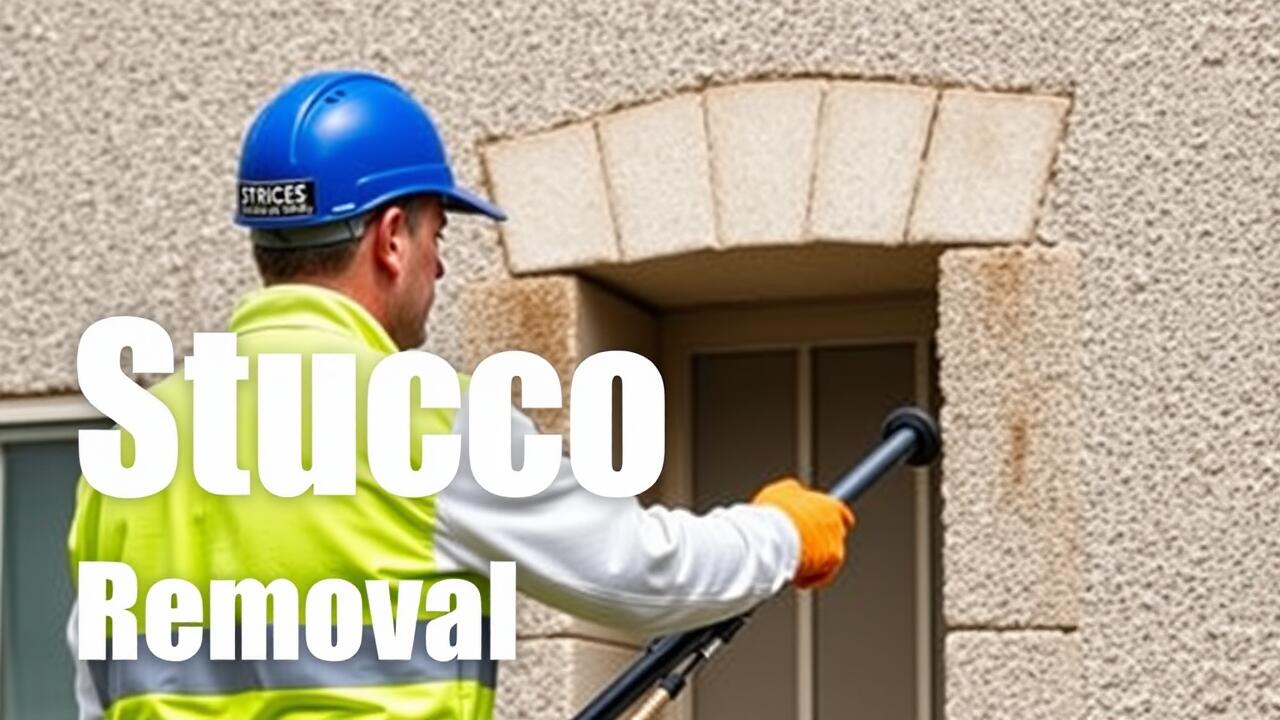
Step-by-Step Process for Removing Stucco
The initial stage in the stucco removal process involves preparing the work area. Start by protecting nearby surfaces and landscaping with drop cloths or tarps. Safety gear is essential, so wear goggles, gloves, and a dust mask to guard against flying debris and harmful particles. Make sure to turn off any electrical sources in the vicinity to prevent accidents while working. Once the area is secure, assess the stucco surface for any signs of damage or moisture, which can indicate deeper issues that may require attention.
After ensuring the surroundings are safe, the actual removal can commence. Using a chisel or a dedicated stucco removal tool, start at a corner or edge and work in manageable sections. Apply consistent pressure to detach the stucco without damaging the underlying structure. For those in need of expert assistance, companies specializing in Westlake, Los Angeles stucco removal provide professional services, ensuring a thorough job while reducing the risk of injury. Continue this method systematically until all stucco is removed, readying the surface for the next phase of the renovation or repair.
Breaking Down the Removal Stages
Before you begin removing stucco, it's essential to gather the necessary tools and equipment. Start with a safety gear kit that includes gloves, goggles, and a dust mask to protect against debris and dust. A hammer, pry bar, chisel, and an oscillating multi-tool can help you break apart the stucco. Ensure you have a sturdy ladder if you're working on upper sections of the wall. Plan your work area carefully to avoid damage to surrounding structures. If you're unsure about handling heavy machinery or potential structural risks, consider consulting professionals who specialize in Westlake, Los Angeles stucco removal.
Once your tools are ready, start by scoring the stucco surface with a utility knife to create manageable sections. Apply even pressure when chipping away at the stucco, taking care not to damage the underlying materials. Use the pry bar to remove larger pieces, working from the top down. Keep an eye out for moisture or rot under the stucco, as these issues may require additional attention before proceeding. Breaking the removal process into stages can make the task more efficient and less overwhelming, ultimately leading to a successful stucco removal.
Dealing with Hidden Moisture Issues
During stucco removal, hidden moisture issues can often become apparent. Water infiltration can lead to mold growth and structural damage if not addressed properly. Inspect the framing and insulation behind the stucco for any signs of dampness or decay. Using tools like a moisture meter can help identify areas with elevated moisture levels. It's essential to act swiftly, as prolonged exposure to moisture can severely compromise the integrity of the structure.
Brentwood, Los Angeles Stucco Removal projects typically reveal these hidden issues, especially in older homes. Once moisture has been detected, it is critical to dry out the affected areas thoroughly before proceeding with repairs. Repairing any leaks and ensuring proper drainage will minimize the risk of similar problems occurring in the future. Maintaining an effective water management strategy will contribute significantly to the building's longevity and health.
Preventing Future Problems
Preventing problems after the removal of stucco requires careful inspection and maintenance of the underlying structure. After the stucco is taken down, it’s essential to check for any signs of moisture damage or decay. Address any issues immediately to avoid future complications. In areas prone to moisture, installing a moisture barrier can be beneficial. This attention to detail can significantly enhance the longevity of the exterior surfaces.
Regular maintenance practices can further protect against potential issues. Routine checks for cracks or water leaks are important. When planning any construction or modification, consider consulting professionals knowledgeable in Westlake, Los Angeles stucco removal. Their expertise can ensure that any future installations or repairs maintain the integrity of the building and prevent water infiltration. Taking these precautions can save time and resources in the long run.
Cleaning Up After Removal
After the stucco has been removed, a thorough cleanup is essential to ensure the area is safe and ready for the next phase of your project. Start by removing any large debris and leftover pieces of stucco from the workspace. Use a broom or a shop vac to clear finer dust and particles that may have accumulated. Wear a dust mask and protective eyewear to shield yourself from any lingering dust, particularly in enclosed spaces, as this can impact air quality and pose health risks.
Dispose of the removed stucco materials in accordance with local regulations. In most cases, this means placing the debris in a sturdy dumpster or bag specifically designed for construction waste. If you are in the Van Nuys, Los Angeles area, there are specialized services available that can assist with debris disposal. Properly handling waste will not only keep your property clean but also contribute to efforts aimed at recycling and reducing landfill burdens.
Proper Disposal of Debris
After the stucco has been removed, managing the debris responsibly is crucial. Gather all the materials, including broken pieces of stucco, dust, and other debris. Using a large tarpaulin can help contain the mess. Ensure you wear a dust mask and gloves to protect yourself from hazardous materials. It’s important to separate recyclable components from regular waste if possible. Dispose of the debris according to local regulations, as improper disposal can lead to fines.
For residents seeking professional assistance, companies like Van Nuys, Los Angeles Stucco Removal can provide efficient clean-up services. Hiring experts not only simplifies the process but also ensures the debris is handled safely and in compliance with all relevant laws. Involving professionals can save time and provide peace of mind, allowing you to focus on the next steps of your renovation project.
FAQS
What tools do I need to remove stucco?
To remove stucco, you typically need a sledgehammer, pry bar, putty knife, safety goggles, dust mask, and a drop cloth for protection. Additionally, a reciprocating saw may be useful for more extensive removal.
How long does it take to remove stucco from a house?
The time it takes to remove stucco can vary based on the size of the area and the method used. On average, it can take anywhere from a few hours to several days for a complete removal.
What should I do if I find hidden moisture issues while removing stucco?
If you discover hidden moisture issues, it's essential to address them before completing the removal. This may involve repairing any water damage, allowing the area to dry, and possibly consulting a professional for mold remediation.
Is it necessary to hire a professional for stucco removal?
While some homeowners may be able to remove stucco themselves, hiring a professional can be beneficial, especially for larger projects or if hidden moisture issues are suspected. Professionals have the experience and tools to ensure the job is done safely and effectively.
How do I properly dispose of stucco debris after removal?
Proper disposal of stucco debris typically involves checking local regulations regarding construction waste. Many areas allow you to take debris to a landfill, while some offer recycling options. It’s essential to verify these guidelines to ensure compliance.



